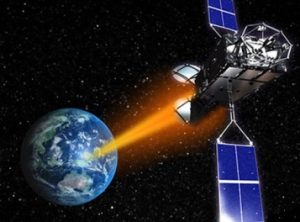Low-Cost Access to Space

Background
Jump to our solution: quench gun technology for Earth to space launch —>
For decades, humankind has dreamed, written books, created films and video games and invested billions of dollars to explore the unique environment of Earth orbit and outer space.
Most of the benefits of the past and current space programs are attributed to advanced technologies or products which are spin-offs from the attempts to develop strong light-weight structures or the means of launching men and materials from the surface of the earth to space.
But the direct benefits of space are quite different and much more spectacular. Many of our current and future global challenges can be met by innovative use of space. For example:

Global Warming and Climate Change – solar Power Satellites located in geosynchronous orbit could beam energy to any place on earth
- Exploration and Colonization – habitats in space to provide launching points for deep space exploration or settlements with an abundant source of energy.
- Space industry – zero gravity manufacturing to make new materials or products not possible on earth.
- Precious metals – recovery from asteroids, other planetary bodies.
- Global Protection – deflection of earth crossing asteroids.
So what is preventing us from experiencing these direct benefits?
Cost of Access to Space 
To date, all satellites have been launched to space using chemical rockets. Usually less than 1 % of the total rocket/satellite system actually goes into orbit. The rest goes into the fire and brimstone which make rocket launches such a spectacular event. Thanks to private enterprise funding the majority of space launch research today, launch costs have fallen greatly.
NASA’s space shuttle had a cost of about $1.5 billion to launch 27,500 kg to Low Earth Orbit (LEO), $54,500/kg.Source: NTRS – NASA Technical Reports Server. SpaceX’s Falcon 9 now advertises a cost of $67 million to launch 22,800 kg to LEO, $2,940/kg.
However, today’s costs still are far less than what we need to afford to build enough of a beachhead in space to build facilities that could manufacture massive structures in orbit such as space colonies using extraterrestrial materials. Source: Space Settlements: A Design Study.
Science fiction writers have envisioned large guns that would be able to shoot capsules into space and imaginative engineers built large guns that were able to accelerate projectiles to an altitude of 180km. But none of these alternative launch technologies received sufficient support to become a viable competitor to chemical rockets. Jules Verne captured the idea in his 1865 book “From the Earth to the Moon” and E. F. Northrup described the technology for a “coilgun” in his 1937 book “Zero to Eighty”.
In the early 1980s, NASA Lewis investigated the feasibility of launching materials to space using railguns. At each of the IEEE International EML Symposia since that time, there has usually been at least one paper discussing electromagnetic launchers as an alternative means of launching materials to space. Unfortunately, none of them has been able to make a compelling case that the EM technology was feasible and affordable. Consequently, there was never sufficient interest on the part of the Government funding agencies to develop the necessary research program to establish the feasibility.
It is ironic that the keynote address at the 4th International EML Symposium ( H. Fair, P. Coose, C Meinel and D Tidman, “Electromagnetic Earth to Space Launch”, Trans on Magnetics, Vol 25, PP 9-16, 1989), advocated:
“If we consider where we were at our first EML Symposium at San Diego in 1983, Dick Marshall and a few others had successfully performed isolated experiments with electromagnetic launchers (mainly launching grams of lexan to hypervelocity). What we have managed to accomplish was to provide a focus which created an incredibly talented technical community and pulled together a serious effort to develop electromagnetic launcher and pulsed power technology. This community is at the forefront of being able to apply its resources and energies to the problem of launching material to space. We can make a valuable and unique contribution to truly opening the frontier of space. As a first step, The University of Texas is planning to host a workshop this fall which will provide a forum for serious discussion of EM earth- to-space launch issues. As this develops, we welcome your participation and are confident that the same high level of technical talent, energy, and enthusiasm will lead to the development of a new, credible program of international importance.”
The workshop was held but the results were not published. There was interest, but no compelling credible path forward.
From 1989 to the mid 1990s, there were significant advances in EML technology including an improved understanding of plasma armatures . All the Army and Navy applications involved launching projectiles which would transit through the atmosphere, so to eliminate concerns about aerodynamic heating, they limited their efforts to about 2-3 km/s. On the other hand, SDIO envisioned railguns in space and had programs such as “Have Sting” with a launch velocity requirement of 16 km/s. But following a political decision by the White House NOT to put weapons in space, the SDIO railgun efforts were terminated as was research on plasma armature railguns.
Since that time, nanoelectronics has emerged as a rapidly growing technology enabling small nano-satellites. The solid state electronics naturally lend themselves to compact, dense, g-hardened devices. Thus, nets of nano-satellites weighing several to 10 kg may provide much more capability than the large redundant 100 ton satellites of previous years. Some of the fastest growing small business ventures involve the design of nano-satellites. But they still face the same physical limits of cost of access to space!
Could novel gun launch technologies leap the low cost Earth to space launch hurdle?
There are a few new candidate technologies for launching materials to space: superconducting quench guns; Thor using as stage one a light gas gun; superconducting MAGLEV in a tube( Startram); and the Slingatron.
Status of these alternative technologies to achieve the ultra-high velocity required for launch to space
Not much has changed on any of these since1980. There are some excellent independent technical efforts- mainly theory and computations. But almost nothing has succeeded in demonstrating the required velocity. Indeed, experiments so far, consuming hundreds of millions of dollars, have ruled out rail guns and coil guns of all varieties tested. In addition, as best as we can tell, the Startram project has not been moving forward. Indeed, it appears to be technologically infeasible given current technology. Here’s one example of why.
In 2018, DARPA ran an internal study of gun launch to orbit, including inputs from Dr. Miles Palmer of 8 Rivers Capital. Unfortunately, Startram’s proposed location turns out to be infeasible given the current technology of the pylons that would hold up the launch system. Granted, Startram proposes to construct the pylons mostly with tension members. However, somewhere among tension members there must be compression portions, and these where the problem identified in the DARPA study.
In addition, that study found no geographic location that would enable a launch up a mountainside if the payload would only tolerate 200 gs of acceleration, and using current pylon technology. That g load limit is necessary given current technology, because gun launch of any sort requires a second stage of a rocket to achieve any final orbit.
Nevertheless, having to launch at an angle only a little bit above horizontal is feasible. The launch vehicle can survive passing though the lower atmosphere with a transpiration cooled nosetip, a technology developed in the U.S. classified world during the Cold War to enable depressed trajectory ICBM reentries.
As far as we can tell, nobody is currently working on Slingatron technology. Sadly, its inventor, Derek Tidman, a treasured friend of many of us at ISIT, is no longer with us, and nobody that we know of is taking up his torch.
Fortunately, two gun launch to space technologies still appear to be feasible and indeed are under development. With either Thor or a quench gun, we nelieve that a launch of 8 km/s is feasible. This could be enough, despite atmospheric drag, to enable inexpensive insertion into orbit using a rocket second stage. Given a near horizontal launch, the vehicle could use aerodynamic forces to curve upward for faster exit from the atmosphere, minimizing the reduction in speed from atmospheric drag.
What technology developments and experiments do we need to discover whether gun launch to space could slash launch costs?
ISIT’s researchers are raising money via tax deductible donations to build and test launch the world’s first ever quench gun.
(1) Build and test a repeatable superconducting quench switch. Simply quenching a superconducting magnet will make it explode, while instantly releasing a fierce blast of magnetic force. Fortunately, analyses conducted by ISIT’s scientists for DARPA show that there is a way to enable a superconductor to quench repeatedly, each time releasing a pulse of power that could launch a projectile.
(2) Fund a team of students to build a prototype quench gun using this quench switching device. If you are a student or professor interested in joining our team, please email our lead researcher, Dr. Harry Fair, at fair[at]isitaustin.org.
(3) Build a payload hardened to 200 gs.
(4) Send this team to test launch a vehicle and a payload at America’s Cup, an intercollegiate rocketry competition managed by the Experimental Sounding Rocket Association (ESRA), held each June at Spaceport America in New Mexico, USA .
How likely is it that we will succeed? We don’t need any scientific breakthroughs. What we need is to hone and test recent technology developments.
What you will receive for supporting this research. Your receipt will enable you to take a deduction on your U.S. income tax. (For other nations’ tax forms, see your nation’s regulations.) We will keep you updated on our research via email, and invite you to our first launch at the annual Spaceport America Cup, along with the opportunity to meet our team. You will be the first to hear about job opportunities with the research you helped to fund. For the sake of history, we also will record you as a member of the team that, with any luck, will someday make new civilizations in space possible.
After accomplishing the first Spaceport America Cup launch. the next, more expensive research phases should become feasible through the power of private enterprise — either existing aerospace companies or new ventures. Indeed, people from major aerospace companies and at least one venture capital powerhouse will be there at the Spaceport for our first launch.
 Next Research Phase (partial list)
Next Research Phase (partial list)
- Aero thermal heating.
- Atmospheric drag.
- Aerodynamic forces to enable faster atmospheric exit
- Rocket-based orbital insertion system.
- Scale to 7-10 km/sec muzzle exit velocity and mass (minimum 5-10 kg)
- Develop freight systems hardened to 200 gs
Images by Don Davis, public domain artwork that he created for NASA.

